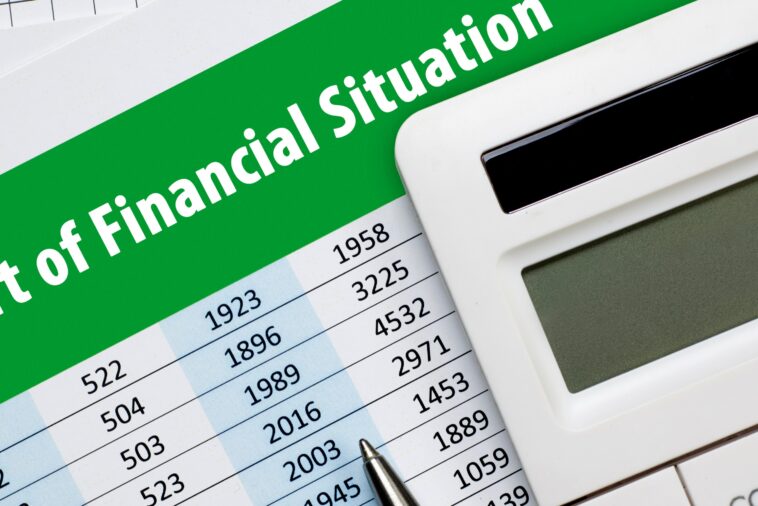Those who are considered lower-income earners are more likely to say they have been saving less than usual and that their spending has been more than usual. This disparity in financial situation is growing, according to a new study. Among those who are considered upper-income earners, the opposite is true. While more than half of those who are upper-income earners say they have been spending more than usual, only a third say they have been saving more.
Lower-income adults are more likely to say they have been saving less than usual
Having a decent emergency fund is important for many reasons. It can help you pay for unexpected expenses and sleep better at night. It can also help you keep your chin up in the face of a financial crisis. However, there are a lot of people out there who are running out of savings.
It’s not surprising to find out that lower income adults are less likely to have a solid emergency savings plan. They also have fewer opportunities to save. This is especially true if you’re earning a meager wage. In fact, the Bureau of Labor Statistics estimates that more than half of adult Americans in the bottom half of the income scale have less than a month of emergency savings. The numbers are grim, especially for women and men of color.
Another reason lower income households need a bailout is that they’re in a bind. Those tasked with paying for everyday expenses such as groceries and housing are struggling to keep food on the table. In fact, 47 percent of low-income adults said they were behind on their housing payments. That’s a lot of people not paying their bills, and a lot of money is at stake.
There’s no doubt that having a solid emergency fund is important, but the best way to do it is to save in a variety of ways. For example, having a savings account that allows you to save three to five months worth of expenses isn’t as hard as you might think. You can do this by saving a small portion of your income each pay period. Or, you can make a larger deposit in an online savings account.
The Center on Budget and Policy Priorities, a nonprofit research organization, has compiled several interesting studies that examine government programs, including social security. Its findings are based on surveys of US adults and provide a frank assessment of Americans’ financial health. You can read more about the study here.
The study reveals that Americans’ savings picture has deteriorated since the pandemic. More than seventy million workers lost their jobs, and a lot of them are now running out of savings.
Upper-income adults are more likely to say they have been spending more
Those earning higher incomes tend to be more likely to say their personal finances have been improving, while those earning lower incomes are more likely to say they are spending less. These differences are particularly pronounced among lower-income consumers, who often rely on debt to pay their bills.
The latest Conference Board survey finds that the gap in confidence data has narrowed over the last two months. Confidence data does not indicate a recession, but the increasing price of fuel and other goods and services are forcing consumers to rethink their financial decisions.
Lower-income consumers are more likely to say their personal finances have gotten worse, but they are more likely to take steps to address their financial challenges. For example, half of households earning less than $50,000 have taken steps to reduce their multiple expenses due to rising prices. These measures include cutting back on driving and eating out. Similarly, half of households earning less than $100,000 have taken steps to reduce their buying of cars, vacations and other products.
Lower-income consumers are more likely than their higher-income counterparts to worry about the effect of a pandemic on their personal finances. For example, two-thirds of consumers whose income is less than $50,000 worry that higher prices will force them to rethink their financial decisions.
In addition, many lower-income consumers rely on borrowing money from friends and family to pay their bills. Lower-income consumers are also more likely to say their family’s financial situation has gotten worse, though the number is lower among higher-income consumers.
Lower-income consumers are also more likely to report having taken steps to improve their personal finances after the pandemic. Compared to the higher-income groups, the number of people saying their personal finances have gotten worse has jumped more than a percentage point in the past few months. The gap in confidence data is driven by inflation, but the labor market is also playing a role in supporting confidence.
A recent PBS NewsHour/NPR/Marist poll found that more than half of Americans have taken steps to cut back their spending in the last six months. This includes four-in-ten Black adults and three-in-ten Hispanic adults who say they have been saving less since the coronavirus outbreak began.
Growing disparities in financial situation
Among middle income countries, income inequality has increased, according to the UN’s World Social Report 2020. The report examines the impact of four megatrends on income inequality.
According to the report, the richest one percent of the population are huge winners in the changing global economy. This group holds between three-quarters and one-half of all the wealth in the world. Despite this, inequality is still increasing globally. In 2016, the top 10 percent of the population had more wealth than the bottom 40 percent.
Income inequality is increasing in the United States and most developed countries. This is due in part to a rise in the number of people earning less than a quarter of the income of the average family. This increase in inequality was exacerbated by the global financial crisis and the Great Recession of 2007-2009.
The United States is home to the largest racial wealth gap in the world. The average White family has five times more wealth than the average Hispanic family. The average Black family has less than half the wealth of the average White family. Moreover, the average white family owns more than half of all the equities in the United States.
Racial wealth gaps continue to widen, according to the Survey of Consumer Finances, an annual survey conducted by the Urban Institute. In 2016, the average White family had $700,000 more in wealth than the average Hispanic family. This wealth accumulation generally follows a predictable lifecycle arc. The gaps in wealth between White and non-White families widen to between $101,700 and $261,100 for families over the age of 55.
The gap between the richest White family and the average Black family is larger than the gap between the richest White family and the median wealth of the United States. This wealth gap will continue to widen under current conditions. The gap between the wealth of the top 10 percent and the bottom 40 percent is more than three times that of the gap between the richest White family and average Black family.
Long-term assessment of financial situation
Increasing the availability of long-term finance has become an important tool for fostering faster economic growth and enduring stability. It also helps households address their life cycle challenges. In addition, it also reduces rollover risk for borrowers. The GFOA recommends that all governments adopt long-term financial plans. They should include capital planning, operating budgets, and debt financing. This information should be reviewed annually, and updated as necessary.
Expenditure Forecasts use exogenous variables, such as government planned expenditures and historical data, to estimate revenue and expenditures. They are useful for predicting the availability of long-term funds for a given period. The debt-to-equity ratio provides a measure of financial solvency. This is especially important in developing economies, where institutions are often weak, and property rights systems are unstable.
Expenditure Forecasts should be used as a starting point for revenue and capital planning. They also serve as a basis for utility rate setting and debt financing. However, promoting long-term finance has proven difficult. Several factors, such as the macroeconomic instability that leads to shorter maturities on financial instruments, have been identified as key obstacles to achieving this goal. In addition, weak institutions have a negative effect on contract enforcement. It is therefore essential to develop long-term financial plans to improve the economic and social well-being of communities.

